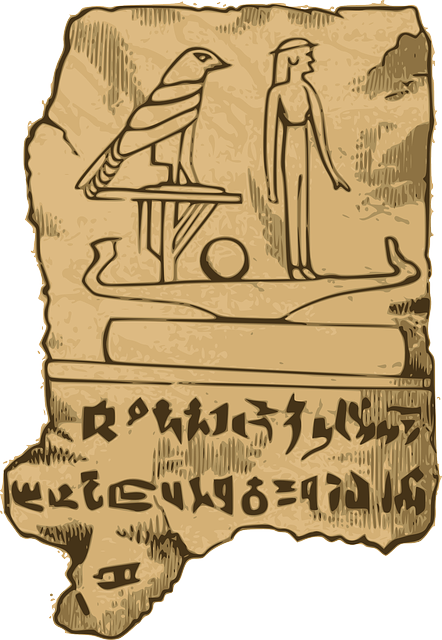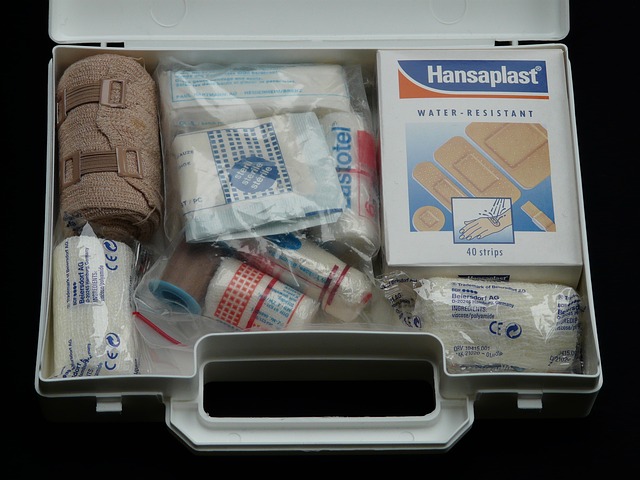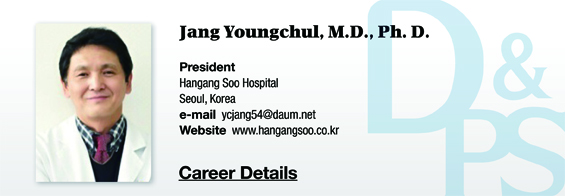Introduction
Wound dressing has developed with the development of medical knowledge and therapeutic materials. As the wound treatment progresses, wound dressing has also changed a lot. There is nothing new about the fundamental method of wound management and containment, except for human. Animals instinctively use their saliva for wound management. Growth factors inside the saliva may affect the treatment of wound, but more fundamental reasons are to clean the wound and remove dead tissues (debridement) by constant licking. As for the human history of wound dressing, early primates placed a leaf on the wound and tapped on the leaf to remove foreign substance and even attempted to express pus from abscess.
The first evidence of surgical treatment in human history can be found on a lot of ancient remains, of which the skull is trepanned possibly to attempt intracranial treatment. Such evidence suggests that there have been attempts to reduce intracranial pressure raised by trauma, but there is no way to find what treatments were made to the surrounding soft tissues. However, based on the formation of new tissues from the trepanned hole, we can presume that the wound was healed and the patient lived a life for a substantial period of time. This example indicates that the ancient people had considerable medical knowledge and performed medical procedures.
.
[Advertisement] MAGNUM(Q-switched Nd:YAG Laser) – Manufacturer: (www.i-dana.com)]
Historical Aspects of Wound Management
Historical record of wound healing can be found in the Sumerian cuneiform, which describes various types of wounds and injuries, together with their treatments. Wound treatments were basically categorized to spiritual treatment and physical application, and mixtures of dust, plants, mud, milk, wine, beer, oil and flour were used for the treatment. Egyptian civilization had a more advanced description of wound treatment. Their record shows detailed explanation about wound diagnosis and care, with special mention about specific topical treatments. Even before that, a papyrus document aged B.C. 1650 (Edwin Smith Surgical Papyrus) describes 48 cases of wounds. This document explains detailed observation of wounds, together with severity and treatment methods. It appears that Egyptians were aware of the difference between wounds caused by infection and those not associated with infection.
A late Egyptian document called Erbes Papyrus (B.C. 1550) introduces methods to produce various topical agents for wound dressing. For Egyptians, the basic materials for wound dressing were lint (a kind of soft hemp cloth), grease and honey. Soft lint might have absorbed exudates and grease – animal fat – might have protected the wound from contamination by foreign substances. Honey – the most frequently quoted material for local wound treatment – is presumed to have worked as an antimicrobial, and is proved even today as having sterilizing effect, killing bacteria by osmotic dehydration, and the effect of reducing edema.

The grease protected the cotton or linen bandage from adhering to the wound. It also absorbed exudates and played a role as a physical barrier to prevent infection, which is surprisingly not very different from today’s wound dressing. Egyptians often used band-shaped bandage, soaked in oil for wound dressing as well as for preservation of mummy, probably the first gauze dressing containing medicine or Vaseline in the present. In addition, a Smith Papyrus recommended using fresh meat at the first day of wound, possibly the first allograft in the human history. Ancient Greeks further advanced the medical knowledge of Egyptians. Based on anatomical knowledge, they could recognize systemic change in response to wound, as well as infectious and non-infectious wounds. They could even tell how fresh a wound was and whether a wound was treated or not. They seem to have differentiated between acute wound and chronic wound for the first time in the human history. Galenos, one of outstanding medical scientists in Ancient Greece, was the one who investigated comparative anatomy for many years. He could treat a lot of wounds while he was working as a medical attendant for gladiators, and he described his experiences as follows:
“… as I have previously explained, it is necessary to keep the wound continuously moist, because if the dressing dry out, the ulcer becomes inflamed. This is true especially in summer, at which time when the pontifices of Pergamum were celebrating the appointed gladiatorial games. I cure the most seriously injured by covering the wounds by a cloth wet with astringent wine and kept moist both day a night by a superimposed sponge…”
As you can see, Galenos was empirically well aware of the importance of keeping moist environment continuously for wound treatment. He also mentions, without any substitute for cotton, linen and wool, it is difficult to maintain moist environment, especially in the hot summer. The importance of moist environment for wound treatment was reinstated at the 20th century by Gilje and Winter, who used a new material for moist wound dressing, which sparked the development of wound dressing materials. Science and medicine had progressed continuously through the Greek and Roman Era into the Renaissance age, but the dressing method had not changed a lot. The process of cleaning wound, removing foreign substances, approximating wound edges and using bandage or wet cloth continued until the 19th century. With the development of scientific thinking in the 17th and 18th centuries, a lot of scientific devices had been invented and developed, such as telescope (1600), micrometer (1639), barometer (1643), microscope (1665), mercury thermometer (1714) and alcohol thermometer (1730) to name a few. With the development of science, medicine and wound dressing has taken a new turn.
In the 19th century, the concept of antiseptic, which is critical for wound dressing, has gained much attention, leading to the comprehension that antiseptic reduces mortality from injury and surgery. Semmelweis (1818-1865), a gynecologist in Hungary, investigated the reason of puerperal fever and found that the incidence of puerperal fever was higher in the ward where a medical student provided treatments to patients just after completing cadaver training. He later reduced the mortality from puerperal fever by washing hands with hypochlorite solution before contacting with patients. However, he could not give a plausible explanation for this result. About the same time in France, Louis Pasteur (1822-1895) proved spontaneous generation of germs based on scientific evidences, demonstrating the theory that bacteria flaws in from surrounding environment.
Inspired by Semmelwies’ observation and Pasteur’s germ theory, a British surgeon, named Joseph Lister (1827-1912), thought that chemical agents could kill bacteria and prevent them from spreading across wounds. He could reduce mortality by 15-50% by soaking all surgical devices and bandage to carbolic acid (phenol) before surgeries and spraying phenol inside the operation room. The early concept of antisepsis could reduce the mortality of patients. But they did not that various chemical materials could have adverse effect on the prognosis of wound healing. Robert Wood Johnson, after learning about the popularity of chemical materials from Lister, made antiseptic dressing, which changed to the form of cotton gauze soaked with idoforam liquid 10 years later in the US.
Gauze dressing soaked with ointment or liquid containing iodine, metal or antibiotics became critical as a conveyor of sterilization. Although the disinfectants used for gauze were not much different from those used in the Egyptian Era, the development of textiles allowed using weaved cloth for dressing, further enhancing the absorption than the previous natural cotton, linen and wool.

Modern Development
The idea of ‘continuously moist environment accelerates wound healing’ by Galenos was resurfaced again by many clinicians in the 20th century. In 1948, a Swedish doctor, named Oscar Gilje, reported that the healing process of venous stasis ulcer could be accelerated when the wound was sealed in a moist environment with adhesive tapes compared to when not sealed. This method was not clinically very effective, however, because adhesive tape may create moist environment but is not good for absorbency. With the development of textile industry in 1950s, various synthetic fibers have been developed, including nylon, polyethylene, polypropylene, polyester, polyvinyls and acrylic.
In 1962, the positive results of accelerated wound healing by maintaining continuously moist environment were published in the Nature by George Winter, who reported that 50% more epithelialization was observed when partial thickness wound of pig skin was covered with polyethylene film to maintain moist environment compared to the wound dried in the air. He later invested polyester and polypropylene film, and Howard Maibach conducted the same study in human and found similar results in 1963. Comparing wounds in wet and dry environments, those in dry environment experience more tissue damage beyond the original wounded tissue due to dehydration necrosis. Epithelialization also occurs more rapidly in moist environment and becomes delayed in dry environment. Wounds treated in moist environment contains more proteolytic enzyme and growth factor, which stimulates wound healing, compared to the wounds in dry environment, where the factors are located deeper in the tissue at a lower concentration.
These results brought about the commercialization of polymeric dressing for wound dressing from the late 1970 throughout 1980s and until now. Polymer dressings can be developed for various purposes, differing in permeability to gas, absorbency and physical form. Dressings went through a lot of changes from the early natural fabric with simple therapeutic agents to the current complicated, professional agents, allowing the selection of different dressings depending on the condition of wound. Such development also means that wound dressing requires more professional knowledge and even increased risk of using wrong dressing materials.
- To be continued -
▶ Previous Artlcle : #3. Management of Minor Burns
▶ Next Artlcle : #5. Advanced Dressing Materials





















